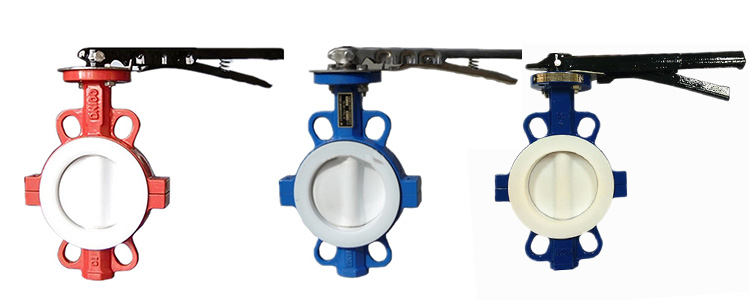

The selection of valves in the chemical industry requires a cautious and strict attitude. As an expert in the valve industry for more than 30 years, TFW valves have the following principles for reference in the selection of chemical valves.
Chemical valves generally use straight-through valves with low flow resistance. They are usually used as shut-off and open media valves. Valves that are easy to adjust flow are used for flow control. Plug valves and ball valves are more suitable for reversing and splitting. , The valve with a wiping effect on the sliding of the closing member along the sealing surface is most suitable for the medium with suspended particles. Common chemical valves includeball valves, gate valves, globe valves, safety valves,butterfly valves, check valves and so on. The mainstream of chemical valve media contains chemical substances, and there are many corrosive media containing acid and alkali.
Alloy steel or fluorine-lined valves are used for corrosive fluids combined with a variety of chemical substances, which strongly resist the corrosion of chemical media and enhance the service life of chemical valves.

Check before use
Inspection items include:
1. Whether there are defects such as blisters and cracks on the inner and outer surfaces of the valve;
2. Whether the valve seat and the valve body are firmly joined, whether the valve core and the valve seat are consistent, and whether the sealing surface is defective;
3. Whether the connection between the valve stem and the valve core is flexible and reliable, whether the valve stem is bent, and whether the thread is damaged or corroded;
4. Whether the packing and gasket are aging and damaged;
5. Whether the valve opening is flexible, etc.
common problem
1. Leakage of flanges and threads at the connection with the pipeline;
2. Packing culvert leakage, waist pad leakage and valve stem cannot be opened;
3. The valve core and the valve seat are not tightly closed to form internal leakage.
Selection principle
In general, the chemical industry chooses valves with a straight-through flow path. The reason is that the flow resistance is small. There are usually valves for closing and opening the medium. This kind of valve is easy to adjust the flow of the valve as a control flow, ball valve and cock. The valve is suitable for reversing and shunting. The sliding of the closing member along the sealing surface has a wiping effect. This type of valve is suitable for medium with suspended particles. Usually, the more commonly used chemical valves we see are globe valves, ball valves, gate valves, safety valves, check valves, plug valves and so on. The mainstream of chemical valve media contains chemical substances, and most of them contain acid and alkali corrosive media.
Most of the media in chemical production equipment have the characteristics of high toxicity, flammability, explosiveness and strong corrosiveness. The working conditions are complex and harsh, and the operating temperature and pressure are high. Once the valve fails, the lighter will cause the medium to leak, and the heavyer will cause the device to stop. Stop production and even cause serious accidents. Therefore, the scientific and reasonable selection of valves can not only reduce the construction cost of the device, but also ensure the safe operation of production. Today, let's talk about the selection of valves!
1. Clarify the purpose of the valve in the equipment or device
Determine the working conditions of the valve: the nature of the applicable medium, the working pressure, the working temperature and the control method of operation, etc.
2. Correctly choose the type of valve
The correct choice of valve type is based on the designer's full grasp of the entire production process and operating conditions as a prerequisite. When selecting the valve type, the designer should first grasp the structural characteristics and performance of each valve.
3. Determine the end connection of the valve
Among threaded connections, flange connections, and welded end connections, the first two are the most commonly used. Threaded valves are mainly valves with a nominal diameter below 50mm. If the diameter is too large, it will be very difficult to install and seal the connection.
Flange-connected valves are easier to install and disassemble, but they are heavier and more expensive than screw-connected valves, so they are suitable for pipe connections of various diameters and pressures.
Welding connection is suitable for heavy load conditions and is more reliable than flange connection. However, it is difficult to disassemble and reinstall the valve connected by welding, so its use is limited to the occasions that can usually operate reliably for a long time, or where the use conditions are heavy and the temperature is high.
4. Selection of chemical valve material
When selecting the material of the valve's shell, internal parts and sealing surface, in addition to considering the physical properties (temperature, pressure) and chemical properties (corrosiveness) of the working medium, the cleanliness of the medium (with or without solid particles) should also be grasped. In addition, it is necessary to refer to the relevant regulations of the country and the user department.
The correct and reasonable selection of the valve material can obtain the most economical service life and the best performance of the valve. The valve body material selection sequence is: cast iron-carbon steel-stainless steel
5. Other
In addition, the flow rate and pressure level of the fluid flowing through the valve should also be determined, and the appropriate valve should be selected using existing information (such as valve product catalogs, valve product samples, etc.).